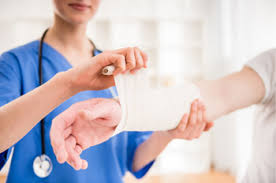 Please Visit and Join the WeHeal Wound Care and Management Community
Please Visit and Join the WeHeal Wound Care and Management Community
Information and References: WebMD | Wikipedia | Healthline
Clinical trials: Clinicaltrials.gov | In Clinical Trials | EU Clinical Trials Register | WeHeal Guide to Researching Clinical Trials
News and Media: News-Medical.net
An open wound is an injury involving an external or internal break in body tissue, usually involving the skin. Nearly everyone will experience an open wound at some point in their life. Most open wounds are minor and can be treated at home.
Falls, accidents with sharp objects or tools, and car accidents are the most common causes of open wounds. In the case of a serious accident, call 911 or seek immediate medical attention, particularly if there’s a lot of bleeding or if bleeding lasts for more than 20 minutes.
There are four types of open wounds, which are classified depending on their cause.
Abrasions occur when the skin rubs or scrapes against a rough or hard surface. Road rash is an example of an abrasion. There’s usually not a lot of bleeding, but the wound needs to be scrubbed and cleaned to avoid infection.
Lacerations are a deep cut or tearing of the skin. Accidents with knives, tools, and machinery are frequent causes of lacerations. In the case of deep lacerations, the bleeding can be rapid and extensive.
Punctures are a small hole caused by a long, pointy object, such as a nail, needle, or ice pick. Sometimes, a bullet can cause a puncture wound. Punctures may not bleed much, but these wounds can be deep enough to damage internal organs. If you have a puncture wound (even just a small one), visit your doctor to get a tetanus booster shot and prevent infection.
Avulsions are a partial or complete tearing away of skin and the tissue beneath. Avulsions usually occur during violent accidents, such as body-crushing accidents, explosions, and gunshots. They bleed heavily and rapidly.
Please Visit and Join the WeHeal Wound Care and Management Community
WeHeal is very grateful to our valued sources of information which include Wikipedia, WebMD, ClinicalTrials.gov, Cancer.gov, Infoplease, and the US CDC (Center for Disease Control).